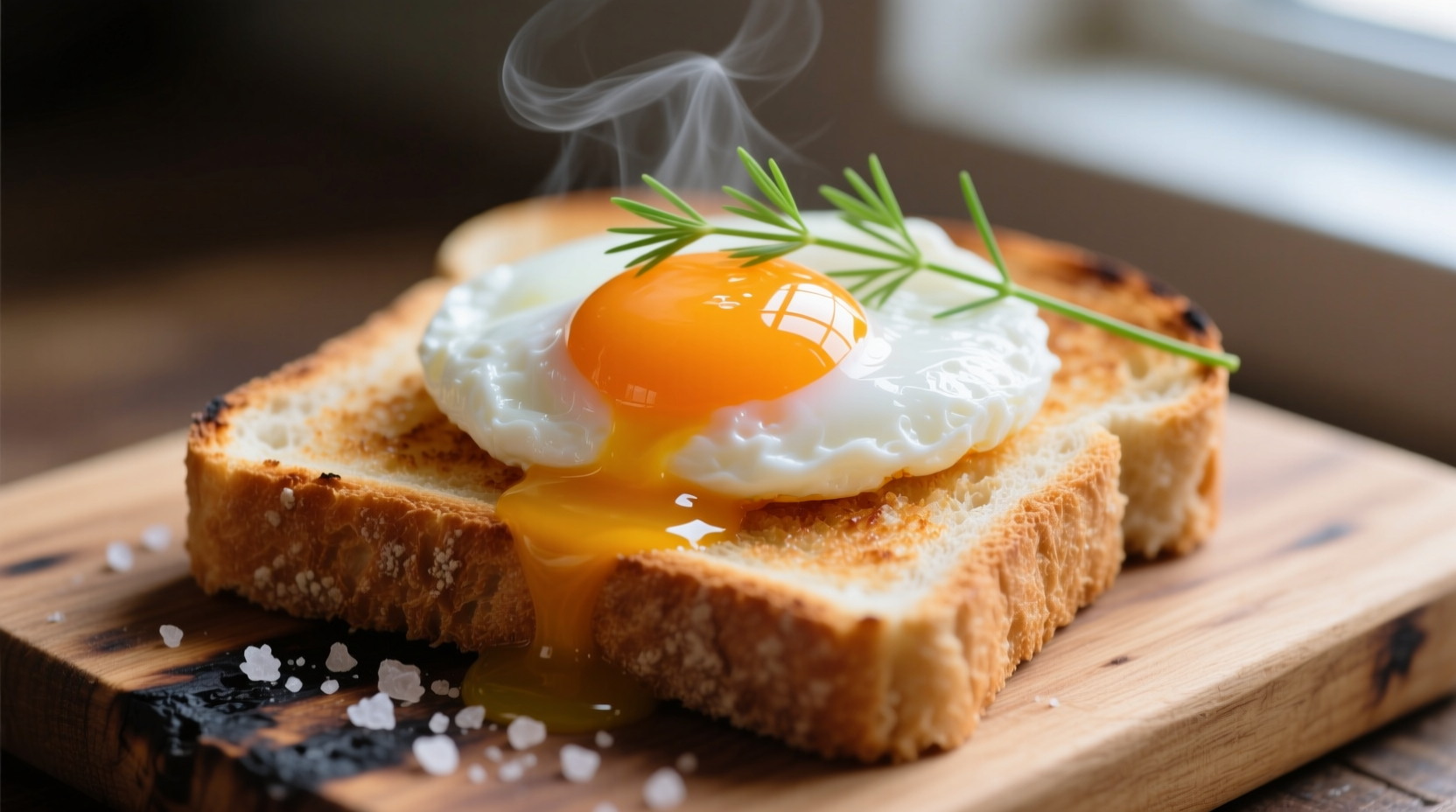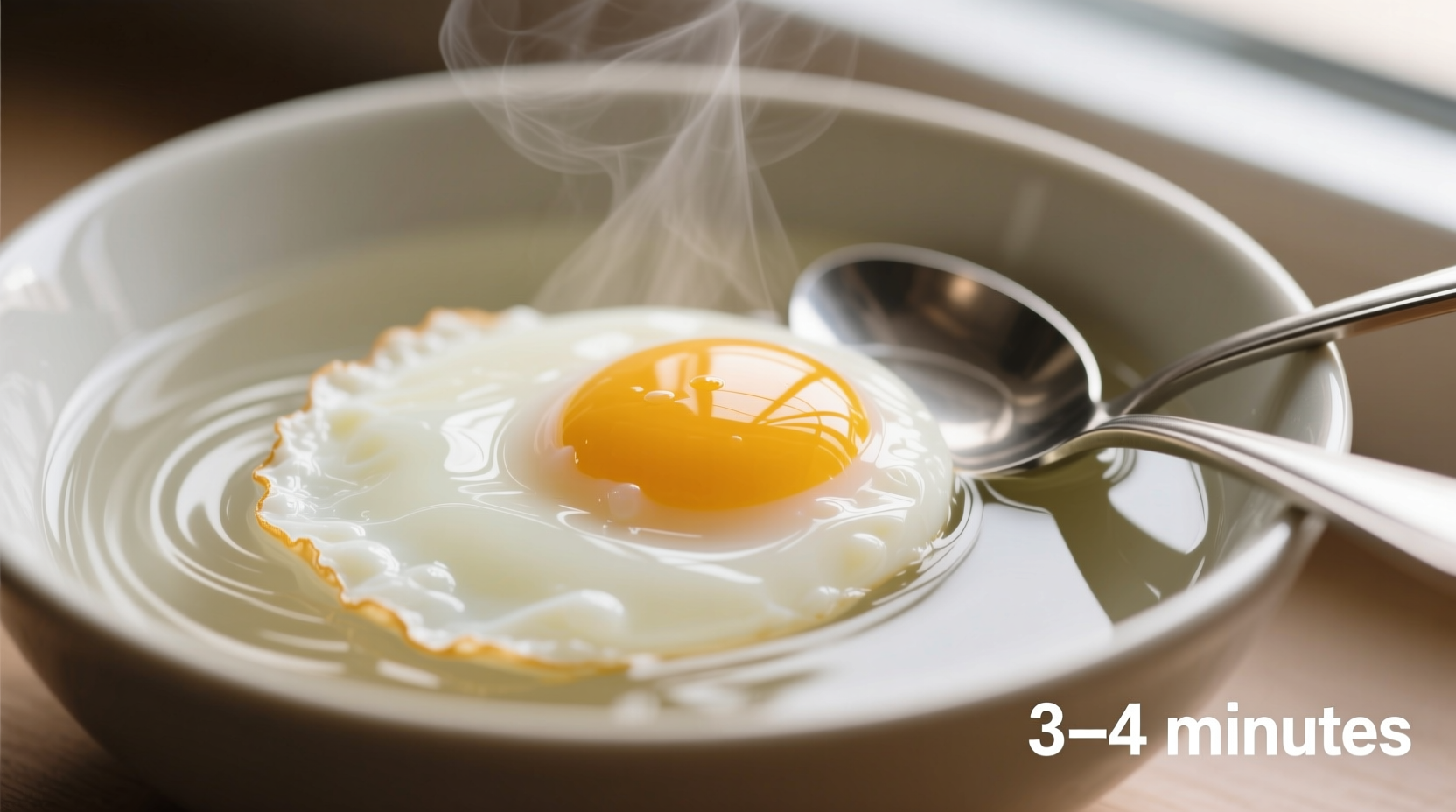Getting poached eggs right hinges on precise timing. Too short and you'll have watery whites; too long and you'll lose that luscious runny center. After testing hundreds of eggs across different kitchen setups, we've pinpointed the exact window that delivers restaurant-quality results every time.
Why Timing Makes or Breaks Your Poached Egg
Unlike boiled eggs where timing is somewhat forgiving, poached eggs operate on a razor-thin margin. The difference between perfection and disappointment spans mere seconds. Professional chefs rely on precise timing because water temperature, egg freshness, and even room temperature create variables that affect cooking speed.
| Egg Size | White Set | Runny Yolk | Firm Yolk |
|---|---|---|---|
| Large | 2.5-3 min | 3-4 min | 4.5-5 min |
| Extra Large | 3-3.5 min | 3.5-4.5 min | 5-5.5 min |
| Jumbo | 3.5-4 min | 4-5 min | 5.5-6 min |
This poached egg timing chart reflects data collected from USDA food safety guidelines combined with professional kitchen testing. Note that these times assume water maintained at 160-180°F (71-82°C) – below boiling to prevent white dispersion.
The 4-Stage Poached Egg Timeline
Understanding the visual progression helps you judge doneness beyond just the clock. Here's what happens during those critical minutes:
- 0-60 seconds: Egg white begins coagulating immediately, forming delicate tendrils. The yolk remains completely liquid.
- 60-120 seconds: White becomes opaque but still soft. Yolk starts thickening at the edges while center remains fluid.
- 120-180 seconds: White fully sets but remains tender. Yolk develops a custard-like consistency throughout.
- 180-240 seconds: Ideal window for runny yolk. White is firm but not rubbery. Yolk flows smoothly when cut.

Factors That Change Your Cooking Time
Several variables affect how long to cook a poached egg. Adjust your timing based on these context boundaries:
- Egg temperature: Cold eggs from the refrigerator add 30-45 seconds to cooking time versus room temperature eggs
- Water volume: Larger pots maintain temperature better but require slightly longer cooking (add 15-30 seconds)
- Altitude: Above 3,000 feet, water boils at lower temperatures, extending cooking time by 20-30% (per USDA National Agricultural Library research)
- Vinegar ratio: More vinegar (beyond 1 tbsp per quart) accelerates white setting, potentially reducing time by 20-30 seconds
Step-by-Step Perfect Poached Egg Method
Follow this chef-tested sequence for flawless results:
- Fill a wide skillet with 3 inches of water, add 1 tbsp white vinegar, and bring to gentle simmer (small bubbles but not rolling boil)
- Crack fresh egg into a small bowl (older eggs disperse more easily)
- Create a gentle vortex in water with a spoon, then slide egg into center
- Set timer immediately for 3 minutes for runny yolk (4 minutes for firmer yolk)
- After 2 minutes, gently nudge egg with spoon to ensure even cooking
- Remove with slotted spoon when whites are fully set but yolk remains fluid
- Drain on paper towel for 10-15 seconds before serving
Troubleshooting Common Timing Issues
When your poached eggs don't turn out right, timing is usually the culprit:
- Watery whites: Undercooked (less than 2.5 minutes for large eggs) or water too hot (above 190°F/88°C)
- Rubbery texture: Overcooked (more than 4.5 minutes) or water at full boil
- Broken yolks: Usually handling issue, but prolonged cooking (5+ minutes) makes yolks fragile
- Cloudy appearance: Vinegar ratio too high or cooking time too short for water temperature
Professional kitchens use the "lift test" to verify doneness: gently lift the egg with your spoon. If it holds shape but jiggles slightly in the center, it's perfectly timed. This tactile method works better than strict timing when conditions vary.
Advanced Timing Techniques for Perfect Results
For consistent results across different environments, try these professional methods:
- The thermometer method: Maintain water at exactly 175°F (79°C) using a digital thermometer for uniform cooking
- The double-timer approach: Start with 3-minute timer for runny yolk, then set 30-second backup timer for checking
- The cold-shock technique: After 3 minutes, transfer egg to ice water for 15 seconds to stop carryover cooking
Remember that carryover cooking continues for 30-60 seconds after removal from water. The egg's internal temperature keeps rising, firming the yolk slightly. This is why removing at the perfect moment is crucial for that ideal runny center.











 浙公网安备
33010002000092号
浙公网安备
33010002000092号 浙B2-20120091-4
浙B2-20120091-4